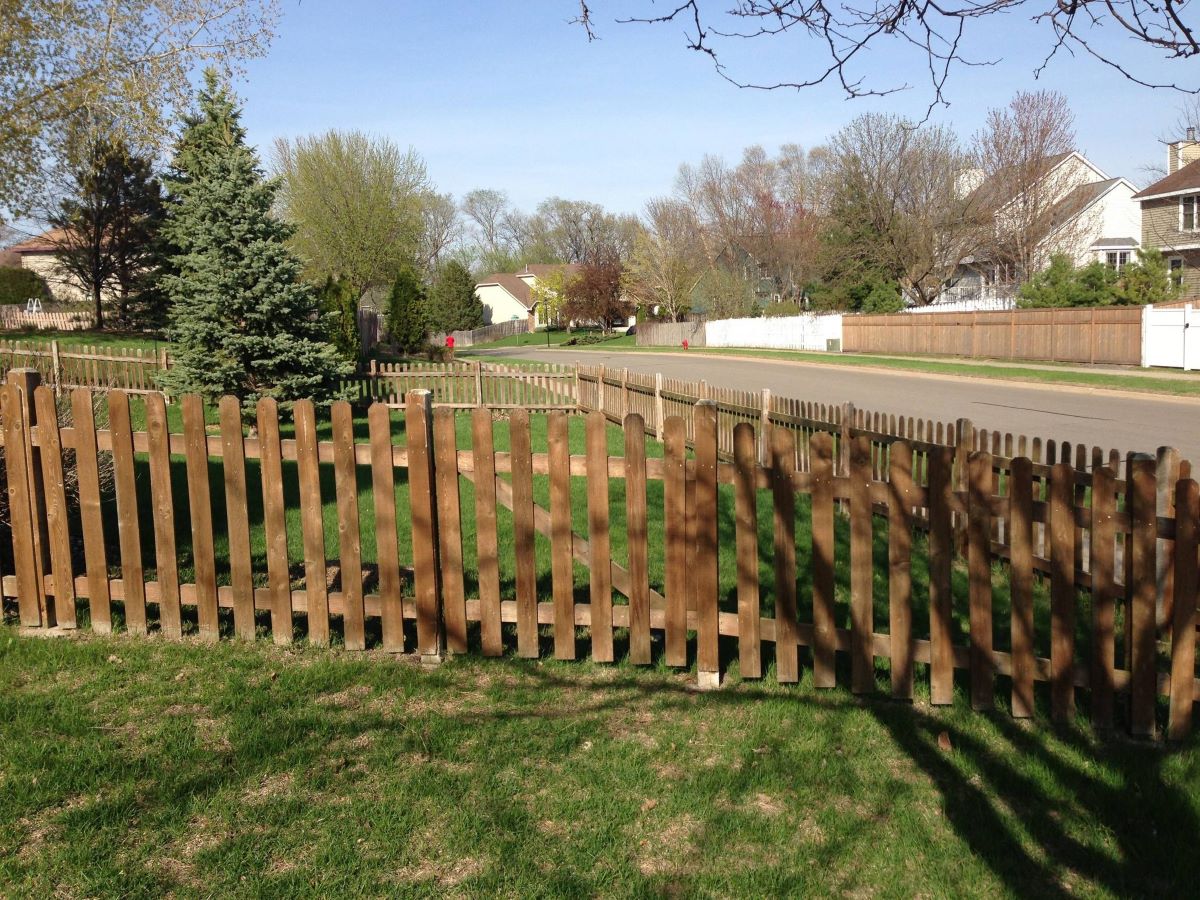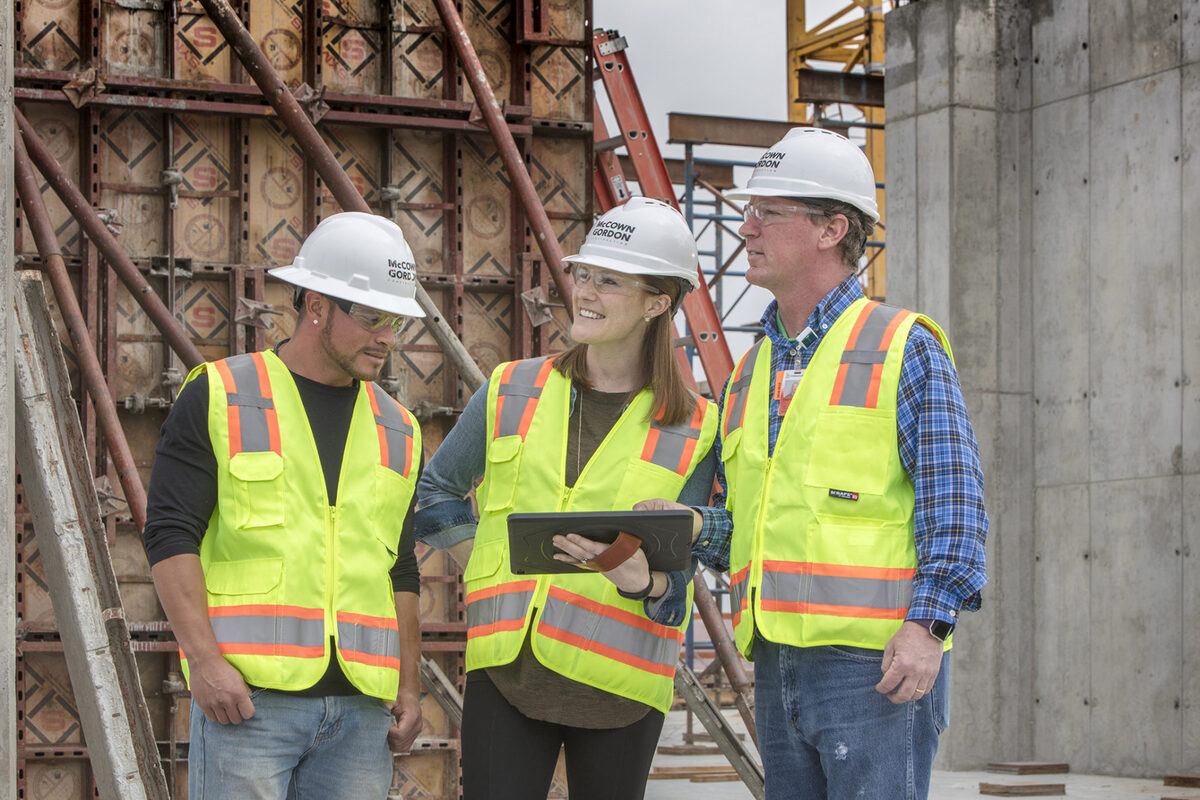Home>Garden Essentials>How To Price A Landscaping Estimate


Garden Essentials
How To Price A Landscaping Estimate
Modified: March 7, 2024
Learn how to accurately price a landscaping estimate for your garden. Expert tips and techniques to help you create an accurate and competitive quote.
(Many of the links in this article redirect to a specific reviewed product. Your purchase of these products through affiliate links helps to generate commission for Storables.com, at no extra cost. Learn more)
Introduction
Welcome to the world of landscaping estimates! If you’re a professional landscaper or a homeowner looking to hire landscaping services, understanding how to price a landscaping estimate is crucial. Creating an accurate estimate ensures that both parties are on the same page regarding the scope of work and cost expectations.
Gathering the necessary information and calculating the various expenses involved in a landscaping project can feel overwhelming, but fear not! In this article, we will guide you through the process of pricing a landscaping estimate. By the end, you’ll have the knowledge and confidence to create fair and competitive estimates.
Before diving into the details, it’s important to note that pricing a landscaping estimate requires a balance between covering expenses and setting a reasonable profit margin. It’s essential to consider factors such as labor, materials, equipment, overhead, and desired profit when determining the final estimate for a project.
So, whether you’re a landscaper looking to refine your estimating skills or a homeowner who wants to understand pricing better, let’s explore the steps involved in pricing a landscaping estimate.
Key Takeaways:
- Pricing a landscaping estimate involves gathering project details, calculating costs, and presenting a clear breakdown to ensure fair pricing for both clients and landscapers.
- Personalizing the estimate presentation, emphasizing benefits, and following up in writing can help build trust and secure landscaping projects.
Read more: How To Estimate Lawn Care Pricing
Gathering Information
Before you can accurately price a landscaping estimate, you need to gather all the necessary information about the project. This includes understanding the client’s needs and preferences, assessing the site conditions, and identifying any unique challenges or requirements.
Start by scheduling a meeting with the client to discuss their vision for the project. Take notes and ask specific questions to gain a comprehensive understanding of their desired outcomes. It’s essential to consider factors such as the size of the area, the type of landscaping desired (e.g., installation, maintenance, hardscaping), and any specific features or elements they want to incorporate.
Once you have a clear understanding of the client’s objectives, it’s time to assess the site conditions. Visit the location and evaluate factors such as the topography, soil type, drainage, and existing plants or structures. This information will help you determine the level of preparatory work required and the type of plants or materials suitable for the project.
In addition to the client’s needs and site conditions, you should also consider any unique challenges or requirements that may impact the cost of the project. For example, working on a sloping terrain might require additional retaining walls or leveling, which will increase the labor and material expenses. Similarly, if the project involves working around existing structures or utilities, careful planning and coordination may be necessary.
Gathering as much information as possible at this stage will provide you with a solid foundation for calculating the costs involved in the landscaping project. It will also help you identify any potential issues or complications that might arise during the implementation phase.
Remember, effective communication and thorough information gathering are key to ensuring a successful landscaping project. By understanding the client’s needs, assessing site conditions, and accounting for any unique challenges, you can start the estimating process on a strong and informed note.
Calculating Costs
Once you have gathered all the necessary information, it’s time to start calculating the costs associated with the landscaping project. This step requires careful consideration of various expenses, including labor, materials, equipment, overhead, and profit margin.
Labor Expenses
Labor expenses form a significant portion of the overall cost of a landscaping project. Consider the number of workers required to complete the job efficiently and estimate the number of hours they will spend on-site. Different tasks, such as excavation, planting, and hardscaping, may require different skill levels, so be sure to account for varying labor rates accordingly.
Material Expenses
Materials are another important cost component. Create a list of the plants, trees, shrubs, and hardscaping materials required for the project. Research local suppliers to determine the prices and quantity needed. Take into account any delivery or shipping costs as well. Keep in mind that material prices may fluctuate, so it’s wise to include a buffer for unexpected increases.
Read more: How To Write A Landscaping Estimate
Equipment Expenses
Landscaping projects often require the use of specialized equipment, such as excavators, mowers, and trimmers. Consider the duration of equipment use and the need for any rental or maintenance costs. If you own the equipment, factor in depreciation and repair expenses over time. Including equipment costs provides a realistic picture of the total project expenses.
Overhead Expenses
Overhead expenses encompass various indirect costs associated with running a landscaping business. This includes general administrative expenses like office rent, utilities, insurance, and marketing. Estimate these costs as a percentage of the project’s total expenses and allocate them accordingly to ensure that you cover your business overhead.
Profit Margin
Don’t forget to include a profit margin when calculating the total cost. Your profit margin should reflect the value you are offering as well as the market rates for similar landscaping projects. Consider factors like industry standards, your expertise, and the level of competition in your area while determining a reasonable profit margin.
By considering all these aspects in your cost calculations, you’ll be able to arrive at a comprehensive estimate that covers all expenses associated with the project while ensuring a reasonable profit for your business.
Labor Expenses
When pricing a landscaping estimate, labor expenses are a significant consideration. The amount of labor required for a project will depend on its size, complexity, and the tasks involved. Accurately estimating labor costs ensures that you allocate sufficient resources and maintain profitability for your landscaping business.
Start by breaking down the project into specific tasks, such as site preparation, planting, hardscaping, and maintenance. Determine the number of workers needed for each task and their estimated hours of work. Consider the skill level required for each task, as skilled labor often comes at a higher cost.
To determine labor rates, research prevailing wage rates in your area. This can be done by consulting industry resources, talking to fellow landscapers, or referring to labor market data. Different regions may have different wage levels, so it’s crucial to gather local information and ensure your rates are competitive.
In addition to the hourly rate, include other labor-related costs in your estimate. This may include payroll taxes, workers’ compensation insurance, and employee benefits. Remember to factor in overtime pay if the project requires workers to put in extra hours, especially if it involves meeting a tight deadline.
It’s also essential to consider labor productivity when estimating expenses. Not all workers operate at the same efficiency level, and factors such as weather conditions, site accessibility, and equipment availability can impact productivity. Take these factors into account when estimating labor hours to ensure a realistic and accurate cost projection.
Furthermore, it’s a good practice to include a contingency buffer for unexpected labor expenses. There may be unforeseen challenges or additional tasks that arise during the project, necessitating extra labor. By including a buffer, you can mitigate any potential financial strain and ensure that you can handle any unexpected labor needs without compromising your profitability.
Keep in mind that labor expenses are a vital component of your landscaping estimate but may vary based on the specifics of each project. By carefully assessing the tasks involved, determining the appropriate labor rates, and accounting for factors that can affect productivity, you can establish labor expenses that align with the scope and requirements of the project.
Read more: What Is Automated Estimating In Landscaping
Material Expenses
When pricing a landscaping estimate, material expenses play a significant role in determining the overall cost of the project. Whether it’s plants, mulch, hardscaping materials, or irrigation systems, accurately estimating material costs ensures that you allocate the necessary resources and provide an accurate estimate to your client.
Start by creating a detailed list of all the materials required for the project. Consider the specific needs outlined by the client, such as the types of plants, trees, or shrubs they want installed. Research local suppliers to obtain current prices for the materials on your list.
It’s important to account for factors that can impact material costs, such as the quality and quantity required. Higher-quality materials often come at a premium, so consider the desired aesthetics and durability when making your selections. Additionally, accurately calculating the quantity of materials needed for the project minimizes waste and ensures you don’t over or under-order.
Delivery and transportation costs should also be included in your estimate. Determine whether you will need to have the materials delivered to the project site and factor in any associated fees. If the weight or size of the materials requires specialized equipment for transportation or if the project site is in a remote location, consider the additional costs that may arise.
It’s important to note that material prices can vary over time. Factors such as market fluctuations, availability, and seasonality can impact the cost of materials. To mitigate this uncertainty, build in a buffer for potential price changes when creating your estimate. This helps protect your business from any unexpected increases in material costs during the project.
As a professional landscaper, you likely have established relationships with local suppliers. Take advantage of these connections to negotiate favorable pricing or explore the possibility of obtaining bulk discounts. Maximizing your purchasing power can help reduce material expenses and increase your overall profit margin.
Lastly, don’t forget to account for any specialty equipment or tools needed for material installation. For example, if the project involves hardscaping work, you may need specific equipment like a concrete mixer or stone cutting tools. Consider the rental or maintenance costs associated with such equipment when estimating material expenses.
By thoroughly researching material costs, considering the quality and quantity required, factoring in delivery and transportation fees, and accounting for potential price fluctuations, you can create accurate and comprehensive estimates that reflect the material expenses of your landscaping projects.
Equipment Expenses
When pricing a landscaping estimate, it’s important to consider the equipment expenses associated with the project. Landscaping often requires the use of specialized equipment to efficiently complete tasks such as excavation, grading, mowing, or trimming. Accurately estimating equipment costs ensures that you allocate the necessary resources and maintain profitability.
Start by identifying the specific equipment required for the project. Assess the tasks involved and determine the type and size of equipment needed to perform them effectively. This may include items like excavators, skid steers, mowers, trimmers, or even specialized equipment for irrigation or hardscaping.
If you own the necessary equipment, consider the depreciation and maintenance costs. Equipment depreciates over time, so it’s important to factor in the wear and tear on your machines. Additionally, regular maintenance and repairs are necessary to keep the equipment in good working order. Estimate these costs and allocate them to the project accordingly.
In cases where you don’t own the equipment required, you’ll need to include rental costs in your estimate. Research local rental companies to obtain pricing information and determine the duration of rental needed for each piece of equipment. Be sure to account for any delivery or pickup fees associated with renting equipment.
In addition to rental costs, consider fuel and consumables related to equipment usage. Fuel costs can vary depending on the duration of the project and the efficiency of the equipment. Include an estimate for fuel expenses based on the average consumption rate of the equipment being used.
It’s also important to consider the expertise required to operate the equipment. If the project necessitates skilled operators, factor in the labor costs associated with their operation. Skilled operators often come at a higher hourly rate, and it’s vital to account for this when estimating equipment expenses.
Finally, don’t forget to include a contingency buffer for unexpected equipment needs or repairs. Equipment failure or unforeseen circumstances may require you to rent additional or replacement equipment, which can impact the project budget. By including a buffer, you can account for any unexpected equipment expenses and maintain profitability.
By thoroughly assessing the equipment needs, considering depreciation and maintenance costs, accounting for rental expenses, factoring in fuel and consumables, and including a contingency buffer, you can create a comprehensive estimate that covers the equipment expenses associated with your landscaping projects.
Overhead Expenses
When pricing a landscaping estimate, it’s essential to consider the overhead expenses associated with running a landscaping business. Overhead expenses are indirect costs that are not directly related to a specific project but are necessary for the day-to-day operations of your business. Including overhead expenses ensures that you cover your business costs and maintain profitability.
Overhead expenses encompass various aspects of your business, including administrative expenses, utilities, office rent, insurance, marketing, and other general expenses. To accurately estimate these costs, start by identifying all the overhead expenses your business incurs on a regular basis.
Office rent or mortgage payments are an essential overhead expense to consider. If you have a dedicated office space, calculate the monthly or yearly cost for the space. If you work from home, you can estimate a portion of your home expenses related to your business activities.
Utilities such as electricity, water, and internet are also important to include in your overhead expenses. Estimate the average monthly costs of these services based on your historical data or by contacting your service providers.
Insurance is another significant overhead expense for a landscaping business. This may include general liability insurance, worker’s compensation insurance, and vehicle insurance. Research insurance providers to obtain accurate quotes for these coverage types.
Marketing expenses are crucial for promoting your landscaping services and attracting new clients. Consider costs associated with online advertising, print materials, website maintenance, and any other marketing strategies you employ.
Other general expenses may include professional fees, such as accounting or legal services, software subscriptions, office supplies, vehicle maintenance, and leasing costs. Review your past expenses and project future costs based on your business needs and growth projections.
When estimating overhead expenses, it’s important to consider how these costs relate to the scope of the project. One common method is to allocate these expenses as a percentage of the total project cost. This ensures that each project adequately covers the business overhead.
By accurately identifying and estimating your overhead expenses, you can factor them into your pricing model. This helps you ensure that your landscaping estimates cover all the necessary costs for running your business and maintain profitability on each project.
Profit Margin
When pricing a landscaping estimate, it’s important to include a profit margin that appropriately reflects the value you provide as well as the financial goals of your business. A profit margin allows you to generate revenue beyond covering your expenses and ensures the long-term sustainability and growth of your landscaping business.
Setting an appropriate profit margin requires considering various factors. First, assess the industry standards and market rates for similar landscaping projects in your area. This gives you a baseline understanding of what clients expect to pay for high-quality landscaping services.
Consider the unique value you bring to the table. Are you known for your exceptional craftsmanship, attention to detail, or personalized customer service? If so, factor in the added value you provide when determining your profit margin. Clients are often willing to pay a premium for top-notch service and expertise.
Another crucial consideration is the level of competition in your area. If you operate in a saturated market, you may need to compete on pricing to attract clients. However, be cautious not to set your profit margin too low, as it can impact your ability to cover expenses and make a reasonable profit.
It’s also important to match your profit margin with the level of risk associated with the project. Some projects may have higher risks, such as working on difficult terrains or undertaking complex designs. In these cases, a higher profit margin can help mitigate potential challenges and ensure that your business remains viable.
Finally, don’t forget to consider your growth plans and long-term goals. Your profit margin should enable you to invest in your business, whether it’s upgrading equipment, expanding your team, or improving your marketing efforts. It’s essential to strike a balance between profitability and reinvestment to ensure the continued success and growth of your landscaping business.
As a general guideline, a profit margin of 15-20% is often considered reasonable in the landscaping industry. However, it’s important to customize your profit margin based on your specific business needs and market conditions.
By carefully considering industry standards, your unique value proposition, market competition, project risks, and long-term goals, you can establish a profit margin that not only covers your expenses but also allows your business to thrive and grow in the landscaping industry.
Read more: How To Price Wine By The Glass
Creating the Estimate
Now that you have gathered all the necessary information and calculated the various expenses, it’s time to create the estimate for your landscaping project. An estimate serves as a formal document that outlines the scope of work, delivers a breakdown of costs, and communicates your pricing to the client.
Start by organizing the information in a clear and concise manner. Begin with a project summary that includes a brief description of the work to be done and the desired outcome. This sets the context for the estimate and helps the client understand the purpose and scope of the project.
Next, present a detailed breakdown of the costs involved. Separate the expenses into categories such as labor, materials, equipment, overhead, and any other relevant expenses. Clearly state the quantity, unit cost, and subtotal for each item. This level of transparency helps the client understand how the final cost is determined.
In addition to the costs, consider including a timeline for the project. Outline the estimated start and completion dates, as well as any key milestones or deadlines. This gives the client an idea of the project’s timeline and demonstrates your commitment to delivering the work in a timely manner.
Consider incorporating a payment schedule as part of the estimate. Outline the proposed payment terms, such as an initial deposit, progress payments, and the final payment upon project completion. This clarifies expectations and ensures a smooth financial arrangement with the client.
It’s also beneficial to include any relevant terms and conditions in the estimate. This may include details about guarantees, warranties, change orders, and your cancellation policy. Clearly communicate your policies to avoid any misunderstandings or disputes later on.
When preparing the estimate, strive to strike a balance between providing a comprehensive breakdown of costs and keeping the document easy to read and understand. Use clear language and avoid jargon, ensuring that the client can easily follow the information presented.
Finally, before finalizing the estimate, review it carefully for accuracy and consistency. Double-check all the numbers and calculations to eliminate any errors or discrepancies. Typos or mistakes can erode your credibility with the client, so pay attention to detail in this crucial stage.
Ultimately, the estimate should be a professional document that showcases your expertise, attention to detail, and commitment to providing a top-quality service. By creating a clear and comprehensive estimate, you demonstrate your professionalism and build trust with the client, increasing the likelihood of securing the project.
Presenting the Estimate
Now that you have prepared a well-crafted and comprehensive estimate, it’s time to present it to the client. How you present the estimate can greatly impact the client’s perception of your professionalism and expertise. Here are some key considerations when presenting the estimate:
1. Personalize the presentation:
Instead of simply emailing the estimate, consider scheduling a meeting or presenting it in person. This allows you to communicate the details effectively, answer any questions, and address any concerns the client may have.
2. Explain the estimate:
Take the time to walk the client through each section of the estimate. Explain the breakdown of costs, clarify any terms or conditions, and highlight the value they can expect from your services. This level of transparency demonstrates your commitment to open communication and builds trust.
Read more: How To Estimate Construction Costs
3. Emphasize the benefits:
While it’s necessary to discuss the cost, also focus on the benefits the client will receive from your landscaping services. Highlight the beauty, functionality, and long-term value that your work will bring to their property. This helps the client appreciate the worth of your services beyond just the monetary aspect.
4. Be prepared for questions:
Anticipate that the client may have questions or concerns about the estimate. Be prepared to address these inquiries confidently and provide additional information if necessary. This shows that you are knowledgeable, responsive, and dedicated to ensuring the client’s satisfaction.
5. Discuss payment terms:
During the presentation, clearly review the proposed payment terms outlined in the estimate. Discuss any deposit requirements, the schedule for progress payments, and the final payment terms. This provides clarity and avoids any misunderstandings or disputes regarding the financial aspect of the project.
6. Present a professional image:
Ensure that the estimate is presented in a professional and visually appealing manner. Use your company logo, include your contact information, and maintain consistent branding throughout. This attention to detail reflects positively on your business and leaves a lasting impression on the client.
Read more: How To Become A Construction Estimator
7. Follow up in writing:
After the presentation, send a follow-up email that includes a written copy of the estimate for the client’s records. This serves as a formal confirmation of the discussed details and helps both parties stay on the same page regarding the scope of work and cost expectations.
Remember, the way you present the estimate can influence the client’s decision. By personalizing the presentation, explaining the estimate, emphasizing the benefits, being prepared for questions, discussing payment terms, presenting a professional image, and following up in writing, you increase your chances of securing the project and building a strong professional relationship with the client.
Conclusion
Pricing a landscaping estimate requires careful consideration of various factors, from gathering information to calculating costs and presenting the estimate. By following the steps outlined in this article, you can create accurate and comprehensive estimates that reflect the value you provide while maintaining profitability for your landscaping business.
Remember, the key to a successful estimate is gathering as much information as possible, assessing labor and material expenses, factoring in equipment and overhead costs, and including a reasonable profit margin. This ensures that your estimate covers all the necessary expenses while providing a fair and competitive price for the client.
When presenting the estimate, personalize the presentation, explain the breakdown of costs, emphasize the benefits, and be prepared to address any questions or concerns. Present a professional image and follow up in writing to solidify the agreement with the client.
By putting effort into the estimating process, you not only showcase your expertise but also build trust and confidence with your clients. Clear and transparent communication throughout the estimation process sets a positive tone for the entire landscaping project.
Finally, continue to refine your estimating skills by analyzing the success of past projects, monitoring market trends, and staying updated on industry standards. As you gain experience, you’ll develop a better understanding of how to price your estimates effectively, ensuring the growth and success of your landscaping business.
In the end, pricing a landscaping estimate is a balance of accurately reflecting the costs while providing quality service to your clients. With a well-crafted estimate, you can set the stage for a successful project that exceeds client expectations and helps your landscaping business thrive in a competitive industry.
Frequently Asked Questions about How To Price A Landscaping Estimate
Was this page helpful?
At Storables.com, we guarantee accurate and reliable information. Our content, validated by Expert Board Contributors, is crafted following stringent Editorial Policies. We're committed to providing you with well-researched, expert-backed insights for all your informational needs.











0 thoughts on “How To Price A Landscaping Estimate”